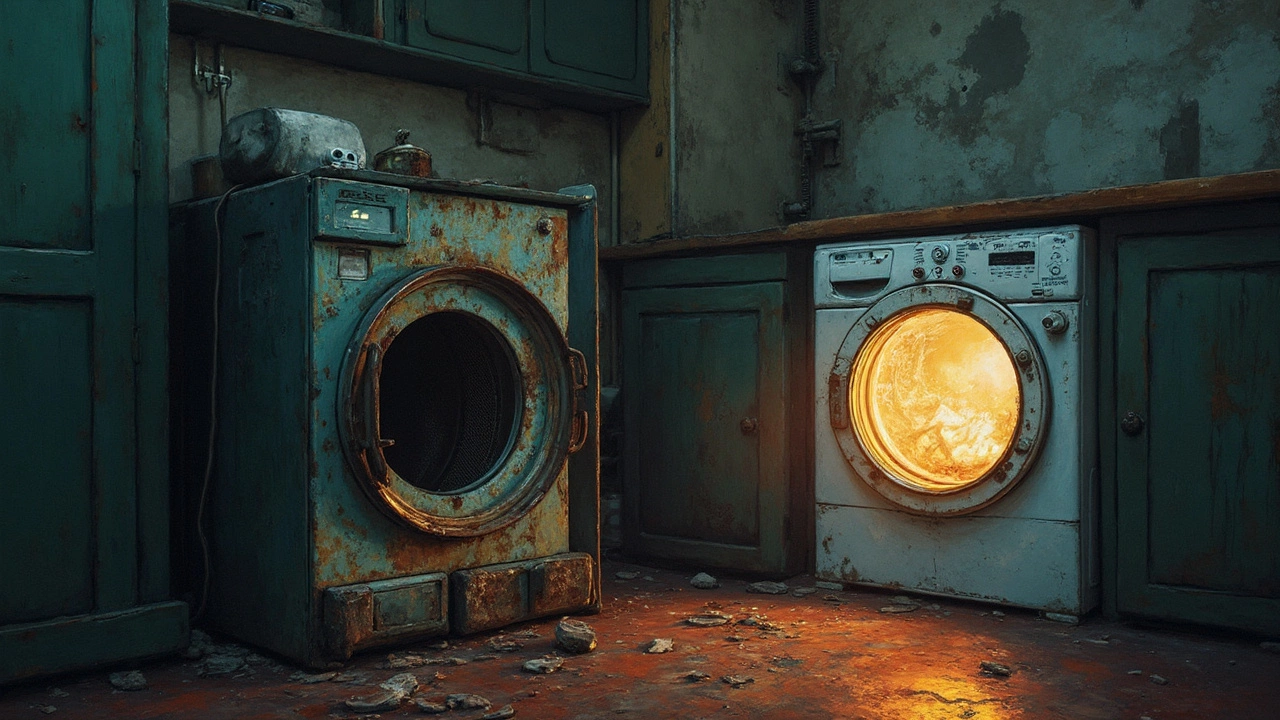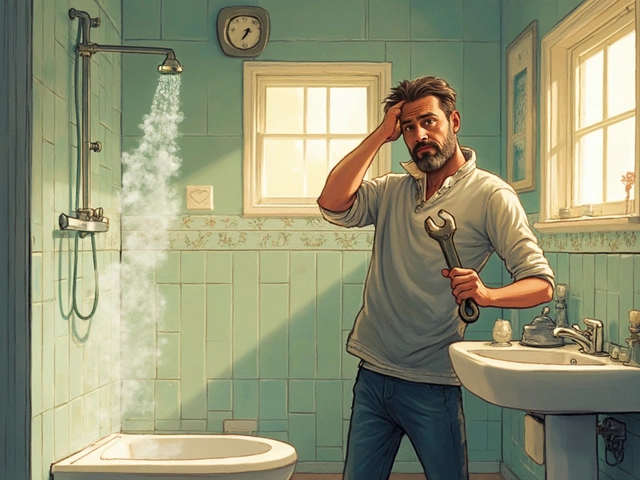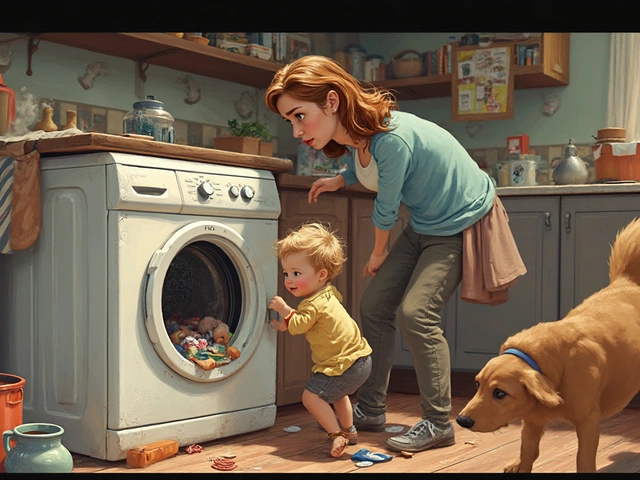Ever find yourself staring at your dryer, wondering if it's finally thrown in the towel for good? It's not always easy to know when it's better to just let your trusty machine retire rather than shell out for yet another repair. Sure, we all love a good DIY fix, but dryers can hit a point where even the handiest among us might need to step back and reconsider. Not every repair is a good investment, and sometimes the signs are waving red flags right in our faces.
Let's kick things off by thinking about electrical issues. Messing with electrical components can be a dicey prospect. If the problem lies there, it might be safer (and cheaper in the long run) to opt for a new dryer rather than risk a home hazard. Besides, a constant breaker trip is more than just a sign—it's a problem that needs careful attention. Repair costs can skyrocket, often offering no guarantee against future faults.
- Signs of Serious Electrical Problems
- Cost vs. Benefit Analysis
- Old Age of the Dryer
- Persistent Mechanical Failures
- Unavailable or Expensive Parts
- Energy Efficiency Concerns
Signs of Serious Electrical Problems
So, you're dealing with a dryer that's acting more haunted than helpful? Well, electrical issues are more common than we'd like to admit, and they can make your appliance scene feel like a horror movie. The first big red flag to watch for is the constant tripping of your circuit breaker. If your dryer keeps shutting down the whole circuit, it might be doing more harm than good.
Another clue that things are heading south is if you notice a burning smell every time you run the dryer. This isn't just a sign of lint that the vacuum can take care of; we're talking about potential wire damage or overheating components. Ignoring these problems is a recipe for a fire hazard, and nobody wants that on their weekend to-do list.
Then there's the case of the power button refusing to cooperate. Sure, sometimes it's just a fickle button, but if it consistently won't start, it could mean there’s a deeper issue with the wiring or control panel.
If you're frequently facing these issues, it might be wise to step back from your inner Mr. Fix-It and consider whether the cost of repair outweighs investing in a new dryer. Remember, while some fixes are straightforward, electrical issues in dryer repairs often require a pro, especially if safety is on the line.
Here's a quick rundown of things to keep an eye on:
- Repeated tripping of circuit breakers
- Mysterious burning smell during operation
- Unresponsive power button or controls
- Sparks or unusual noises when starting
If any of these sound familiar, it might be time to evaluate repairing versus replacing. Peace of mind and safety should always be at the top of your list.
Cost vs. Benefit Analysis
Crunching the numbers is key when deciding whether to repair or replace your dryer. Take a moment to weigh the costs of fixing up your current appliance against the price tag of a shiny new model. If repairs start creeping up towards half the cost of a newbie, it might just make more sense to cut your losses and go for the upgrade.
Consider the age of the dryer. A good rule of thumb for appliances is the 50% rule. If your dryer is more than halfway through its average lifespan of 10-15 years, and the cost of fixing it is 50% or more of the price of a new one, you might want to think twice about grabbing that tool kit.
There's also the ongoing cost of operation to think about. Newer dryers are built with energy efficiency in mind. That could mean lower utility bills every month, which adds up over time. So while the upfront cost is higher, it could save you cash in the long run.
- Repair costs typically include parts and labor, which can add up if multiple repairs are needed.
- Check for warranties: If your dryer is still under warranty, repairs could be covered.
- Consider utility savings: Newer models often use less electricity or gas, potentially lowering your monthly bills.
Here's a tip: jot down the numbers and payback period to get a clearer picture. If the savings from a new energy-efficient model offset the initial cost within a couple of years, you might find you're making a financially savvy move.
Let's throw in some statistics for good measure. According to the U.S. Department of Energy, replacing a dryer over a decade old with an Energy Star model could save approximately $75 annually in utility bills. That might not sound like much, but add it up over the years, and it starts to make a huge difference!
Old Age of the Dryer
Alright, let's talk about the elephant in the laundry room: old age. Dryers generally have a lifespan of about 10 to 13 years. If yours is creeping up to that age, or even beyond, it might be time to think twice before repairing it. Like anything else, as dryers age, they start to become less efficient and more prone to breakdowns. It's kind of like driving an old car—eventually, the cost of repairs outweighs the value of keeping it on the road.
A big clue that your dryer might be too old to fix? If it's impossible to get replacement parts because the model's been discontinued, that's a pretty big hint. Manufacturers stop making parts for older models to encourage new purchases. Even if you find the components, they’re probably more expensive due to their scarcity.
Another factor is energy efficiency. Newer dryers are designed to use less energy, potentially saving you money on your utility bills. Investing in a newer model can actually end up being more cost-effective than constantly pouring money into an old clunker.
You'll also want to get a sense of your dryer’s performance. Is it taking longer to dry your clothes? Do you need to run more cycles for the same effect? These are signs that your dryer may not be distributing heat as well, and even if you do repair it now, it might not have the longevity or efficiency you’re hoping for.
- Check the cost of repairs versus the cost of a new dryer.
- Evaluate the energy efficiency of your old dryer compared to newer models.
- Consider how easy it is (or isn't) to find parts.
- Look at the drying performance and how it’s changed over time.
So, if your dryer is getting up there in years, it might be wise to start looking for deals on a new one rather than investing in repairs. Your wallet—and your clothes—might thank you!

Persistent Mechanical Failures
There's nothing more frustrating than dealing with those persistent breakdowns that just won’t quit. We've all been there: you fix one issue, and in no time, something else goes wrong. It's like that game of Whack-a-Mole, but instead of moles, it's your dryer acting up in yet another novel way. So, when do you know it's time to stop pouring money into repairs?
Think about the frequency of these breakdowns. If you're constantly calling the repair guy, it might be your signal to step back. Even if each fix seems minor, those costs add up and can eventually surpass the price of a new machine. Plus, older dryers are notorious for developing recurring problems with belts, drums, or motors. These components face wear and tear over time, especially if maintenance has been a bit lax.
Consider making a simple checklist to track issues. If you notice the same problem popping up again and again—like that annoying thump-thump sound or the dreaded dryer that won't heat—consider it a sign. It's often due to parts wearing down, like a drum roller going kaput or a heating element failing. Repeated repairs might offer temporary relief but often don’t address underlying issues.
- Check for recurring issues: heat not consistent, strange sounds, or unresponsive buttons.
- Calculate repair costs over the past year. Does it almost match the price of a decent new dryer?
- Read the warning labels: Continuous problems can mean potential safety issues, especially if vents are getting clogged or motors are overheating.
Sometimes, letting go is the best option. Investing in a new dryer can ultimately save you time, headaches, and even money in the long run. Plus, today's models are energy efficient and can handle loads better, saving on electricity and time spent on laundry duty. So, when faced with persistent mechanical failures, weigh the pros and cons. The decision to stop repairing isn’t just about cost—it's about peace of mind.
Unavailable or Expensive Parts
Ever had a dryer on the fritz only to find out the part you need to fix it is nowhere to be found? Or worse, the price tag on that part is so high you could practically buy a new dryer instead? Welcome to the common dilemma of dealing with dryer repair woes.
Some brands, especially lesser-known ones, have parts that are either incredibly rare or have become obsolete. This is particularly true if the dryer is several years old. Manufacturers often stop making parts for older models, forcing you to either hunt painstakingly online or go through third-party sellers. These parts, even if you do manage to track them down, can be ridiculously pricey.
Now, let's talk money. Suppose a replacement part costs almost as much as half the price of a brand-new dryer. It just doesn't make sense economically. When you start factoring in labor costs, you might be inching closer to the price of a fresh, energy-efficient model that could save you dollars on your electric bill each year.
Here's a quick tip: always check for availability and cost of replacement parts before making any decisions. Be sure to get quotes from multiple repair shops or suppliers. It might feel like a chore, but it can save you from throwing good money after bad.
To help make the decision easier, here's a rough idea of how parts could weigh on your wallet:
| Part | Cost Range |
|---|---|
| Heating Element | $30 - $200 |
| Drum Roller | $10 - $70 |
| Motor | $100 - $300 |
When faced with unavailable or expensive parts, consider the age and overall condition of your dryer. Sometimes, it’s smarter to cut your losses and start fresh rather than patching up an old machine. It might bring peace of mind and, oddly enough, a healthier bank account in the long run.
Energy Efficiency Concerns
Thinking about dumping your old dryer because it's guzzling power like nobody’s business? You're not alone. When it comes to energy efficiency, many older dryers just can't keep up with today’s standards. Switching to a newer model can be a smart move, saving you both energy and cash in the long run.
Old dryers often operate way below the efficiency levels of current models. If your dryer is more than 10 years old, it's likely not Energy Star certified. Energy Star dryers use around 20% less energy compared to traditional models, which can stack up to a decent amount on your utility bills over time.
Furthermore, new dryers often come with features like moisture sensors, which shut off the machine when clothes are dry. This means no more wasted energy drying clothes that are already done. If you're noticing a spike in your energy usage every time laundry day comes around, it might be that your dryer is the culprit.
- Check Energy Consumption: Compare your old dryer's energy usage with new models. Sometimes, a direct comparison in terms of annual operating costs can highlight just how much you could save by getting a new one.
- Government Guidelines: Check for government rebates or incentives for purchasing energy-efficient appliances. Sometimes, you get a sweet financial kickback that makes the transition even easier.
- Inspect New Features: Consider modern features that weren’t available a decade ago, like smart technology that optimizes cycles and reduces energy waste.
By choosing to upgrade from an energy hog, you’re not only cutting down monthly costs—you're also doing a solid for the environment. So, when your dryer repair becomes a question, ask yourself if it's worth hanging onto an inefficient power muncher or if it’s time to make a switch.
| Feature | Old Dryer | New Dryer |
|---|---|---|
| Average Energy Use | 2.5 kWh/load | 2.0 kWh/load |
| Energy Star Certified | No | Yes |
| Moisture Sensor | No | Yes |





